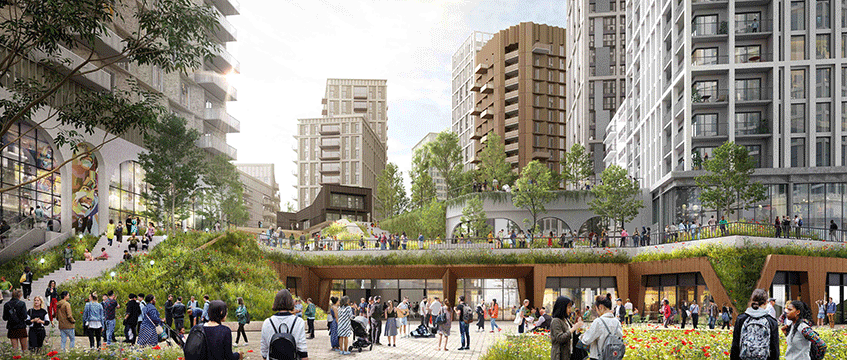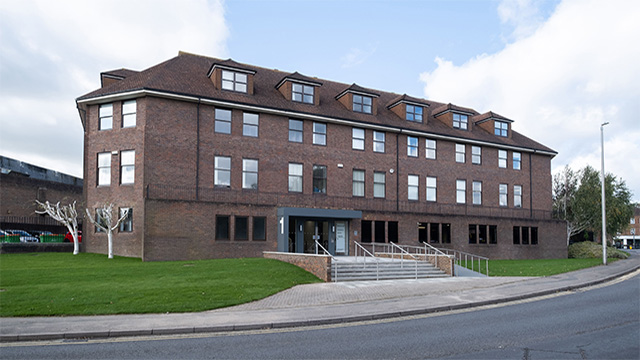Landsec and Lewisham: ‘A long journey, but worthwhile’
LandsecU+I has launched a fresh consultation over sprawling plans to redevelop its shopping centre in Lewisham, south-east London – a project that its team says has already taught the company valuable lessons about engaging with local communities during regeneration.
Development director Jon Watson describes the scheme as “the most complex thing I’ve worked on”. Existing proposals for 1,700 homes, a park and a new shopping centre have now been bolstered by a music venue and recording studios, as well as a relaunched Model Market, a disused market that in recent years became a street food hub before closing during the Covid-19 pandemic.
LandsecU+I has launched a fresh consultation over sprawling plans to redevelop its shopping centre in Lewisham, south-east London – a project that its team says has already taught the company valuable lessons about engaging with local communities during regeneration.
Development director Jon Watson describes the scheme as “the most complex thing I’ve worked on”. Existing proposals for 1,700 homes, a park and a new shopping centre have now been bolstered by a music venue and recording studios, as well as a relaunched Model Market, a disused market that in recent years became a street food hub before closing during the Covid-19 pandemic.
With the proposals “in the thick end of the planning process”, says Watson, engagement with the community is now “at its most crucial moment”. The value has been clear for some time, he adds. After starting initial discussions in the community roughly two and a half years ago, it wasn’t until October 2023 that the first designs were revealed.
“Two and a half years ago, if we had proceeded with a planning application or if another developer had come in with an application for this site, it would have been very binary,” says Watson. “You would have had us or another developer wanting as much resi as possible, or as little retail as possible, because that tends to be how investment works. A big early message from the community was they really didn’t want to lose their shopping centre. It’s a super important community asset… People were nervous about losing that as part of a big development. But people also wanted change, and the main change they wanted was green space.”
The solution, as Watson bluntly puts it, is “a big park on top of a new shopping centre”. It adds to the complexity, but if it’s what the community wants and gets local people onside with the scheme, the years of engagement have been worth it.
“The scheme we’re going to end up with is going to be a very cool place,” Watson says. ”There’s going to be a much better, more interesting, more unusual theme than it would have been if we’d run through a process quickly. It’s a long journey, but worthwhile for everybody.”
Now the company wants to bring younger voices into the discussion. The latest consultation will include DJ workshops and competitions on a version of the Fortnite video game, in which players compete in an online version of the shopping centre. Such initiatives are attempts at creative ways of engaging with the borough’s younger residents.
“This is a 10-year build at least once we’ve got planning permission,” Watson says. “If you had to pick a group for such a long-scale town centre regen, it has to be young people.”
For Kate Honey, group community advocacy lead at Landsec, such measures are putting into practice what the company has mapped out in its community charter.
“The idea is that we get as many people involved in talking about the future of a place as we possibly can from all different backgrounds,” she says. “A lot of developers say that and it’s admirable [to talk about] but actually doing it is really difficult. We can’t create places for people who are young now and might want to live there in the future if we don’t involve them now.”
The process will always start with research and open questions, Honey says, helping the developer to understand “the very specific make-up of a very specific community”.
“In Cardiff it will be one thing, in Glasgow it will be another thing, and in Lewisham we know exactly who our community are, how to talk to them and how to deliver social value through the engagement,” she adds.
And that means talking about more than “height and massing”, as important as those issues are.
“We want people to feel like they can almost experience what this place will be like in the future,” Honey says. “It’s not just showing them some stuff that looks good, it’s about creating the kind of atmosphere that if we continue through the operation of the asset now, through meanwhile uses and into the ultimate cultural uses of the [future] scheme, it feels natural and organic, and that [people] have been part of the entire process.”
Images from Landsec











